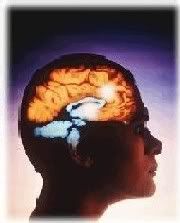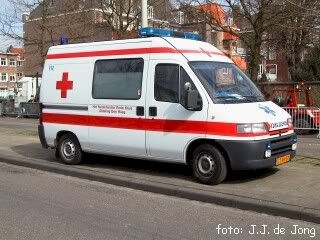Acute Ischemic Stroke Care and Outcome.
Results from many clinical trials have been used to develop guidelines for acute stroke care and for stroke prevention. Despite these recommendations, marked regional differences remain in quality of stroke care, which may impact recovery and outcome after stroke. Previous studies have shown that case fatality is high in Poland compared with other European countries. In 1997, the Ministry of Health in Poland established the National Stroke Prevention and Treatment Program. The aim of the program was to improve stroke care delivery and to determine the use of evidence-based stroke treatment in Poland. Because of insufficient data collection on stroke patients, the Polish National Stroke Prevention and Treatment Registry was established in 2000. The questionnaires were based on the World Health Organization Stepwise Approach to Stroke Surveillance (WHO STEPS Stroke) for hospital-based studies (step 1) and expanded with questions to meet local needs. The aim of the present study was to compare acute ischemic stroke care and outcome in participating centers.
Discussion
In the present study, we found that there are marked differences in patient characteristics, acute hospital care, and outcomes for stroke patients among centers participating in the Polish National Stroke Prevention and Treatment Registry.
Patient Characteristic and Risk Factor Distribution
The most common risk factor was hypertension, which was observed in 70% of all patients. Other studies have shown that the prevalence of hypertension in Polish ischemic stroke patients may be higher than in other European countries.
In our study, only 82% of patients with hypertension declared to receive blood pressure–lowering agents before stroke, but we had no information on whether they were sufficiently treated. Also important is that there were 18% patients with a diagnosis of hypertension not receiving any blood pressure–lowering agents. They were either not convinced by their general practitioner about the importance of treatment, or drugs were not prescribed. Atrial fibrillation was diagnosed in 30% of all stroke patients, which is high compared with other studies. Oral anticoagulants before stroke were prescribed for only 10% of atrial fibrillation patients, whereas antiplatelets were underused for patients with history of MI or stroke.
Hyperlipidemia and coronary artery diseases were diagnosed in many patients, of whom only a few received statins before stroke. The reason for this could be insufficient diagnosis or high acquisition costs of statins in the study period. Although there are local differences in the number of treated patients, antiplatelets, oral anticoagulants, and statins are still under prescribed in Poland.
In-Hospital Care Delivery
The Polish National Stroke Prevention and Treatment Registry was focused on in-hospital care delivery, and we found that there are significant differences among institutions participating in the registry. First, there are differences in time from onset of stroke symptoms to admission. Although many of the patients (42%) were admitted within 6 hours, 35% of patients were admitted after 6 and before 24 hours from symptom onset. Improving organization of local emergency transport and awareness of stroke symptoms among the patients could potentially reduce the delay before admission. It is important because early hospitalization allows monitoring of vital functions and treating complications, which may improve outcome. The present data from the Polish National Stroke Prevention and Treatment Registry were collected before recombinant tissue plasminogen activator treatment was established in Poland.
Recommended onset to door time is 1 hour maximum, which is also the average time from onset to admission in patients registered in the SITS Registry (Safe Implementation of Thrombolysis in Stroke-Monitoring Study). Unfortunately, we lack detail information about the distribution of patient admittance within initial 6 hours from stroke onset.
Neuroimaging on admission was done in 87% of patients (range among centers was 57% to 100%). These differences may be explained by the participation of both neurological departments with and without stroke units. Only stroke units have easy access to CT/MRI, and other departments would have to send the patient to other hospitals for scanning.
Fifty-one percent underwent carotid Doppler ultrasound during hospitalization, with great range among institutions from 4% to nearly all patients. The rate is low, but there is also a big gap in providing this basic stroke care delivery component. There were also centers performing cerebral spinal fluid examination in the majority of patients. The purpose of this examination was to distinguish between ischemic and hemorrhagic strokes in centers without the possibility to perform CT scan on admission. These results suggest that there is a marked difference in the procedures different departments can provide for stroke patients.
Comparing early treatment in different institutions, the usage of antiplatelets (aspirin) is 82%, but there are institutions in which only half of the ischemic stroke patients receive aspirin, although it is recommended for all patients after ischemic stroke.
The high usage of antibiotics during hospitalization suggest a high complication rate or generous prescription of antibiotics. In the present study, data on infections were not collected, and we are unable to provide information that can clarify the reason for these results.
It has to be mentioned that in some centers, the neuroprotective drug piracetam was used in every stroke case, although its benefit was not proved in clinical trials (Piracetam in Acute Stroke Study I). Its continuous use is most surprising and may both indicate that resources are spent inappropriately and that stroke patients are exposed to adverse effects of a treatment for which there is no scientific support.
Physiotherapy was performed in 81% of patients and speech therapy in 28% of patients, which is higher than reported from other hospital-based studies. Because we did not collect data on aphasia, we are unfortunately not able to indicate whether the current level of speech therapy is sufficient. Previous studies indicate that 1 of 3 stroke patients has aphasia. It is possible that centers with low reported speech therapy may not have provided proper rehabilitation to admitted patients, which should be examined further in future studies.
Stroke Outcomes
Average hospitalization lasted 2 weeks. The high number of deaths caused by complications should be stressed. Stroke complications (and specially infections) could be regarded as the indicator of general care quality. Improving general nursing care and reducing the number of complications would probably decrease the death rate in Polish stroke patients. Differences in death and poor outcome rates are significant among centers even after adjusting for case mix differences. Although two thirds of study patients were managed in stroke units, treatment based in stroke units was not associated with better outcomes (data not presented). Stroke units were in the early stage of organization during study time. We did not have information about quality of stroke units from participating centers; we had only the statement of the head of the department about having a stroke unit. Other studies showed significant discrepancies between centers in terms of stroke unit quality of care in Poland. Detailed guidelines for organization of stroke unit–based treatment were defined by the expert council of the National Stroke Prevention and Treatment Program after study data completion.
There are several limitations of the present study. The National Stroke Prevention and Treatment Registry was the first registry of stroke patients, having collected data from different parts of Poland. Unfortunately, not all institutions that were taking care of stroke patients participated in the National Stroke Prevention and Treatment Registry. Mazowieckie province and Warsaw were over-represented in the registry, and there is still a shortage of information from several provinces in Poland. Nevertheless, the collected sample includes not only patients from academic hospitals but also from less specialized ones. Our analysis captures only in-hospital data; we do not have long-term stroke outcomes such as death and dependency in participating centers. Although we initially had data from 48 different institutions, 22 did not meet the criteria for adherence to the protocol and were excluded from the analyses. The study was made before recombinant tissue plasminogen activator treatment in Poland, so there is no current data on these patients.
Several factors can contribute to local differences in stroke care. Some of them can be effectively eliminated with standardization of stroke management in Poland. The widespread use of standard care (including patient education, effective stroke risk factor control, and quality stroke unit–based acute treatment) based on novel guidelines would result in clinical benefits and cost savings.
Despite limitations, this is the first study collecting cross-country information from neurological departments. The questionnaire, based on the WHO STEPS Stroke for hospital-based studies (step 1), was standardized to enable comparison of different neurological departments.
Conclusions—:
The observed significant differences between Polish stroke centers indicate the need for improvement of patient education, effective stroke risk factor control, and standardized in-hospital care.




0 Comments:
Post a Comment
<< Home